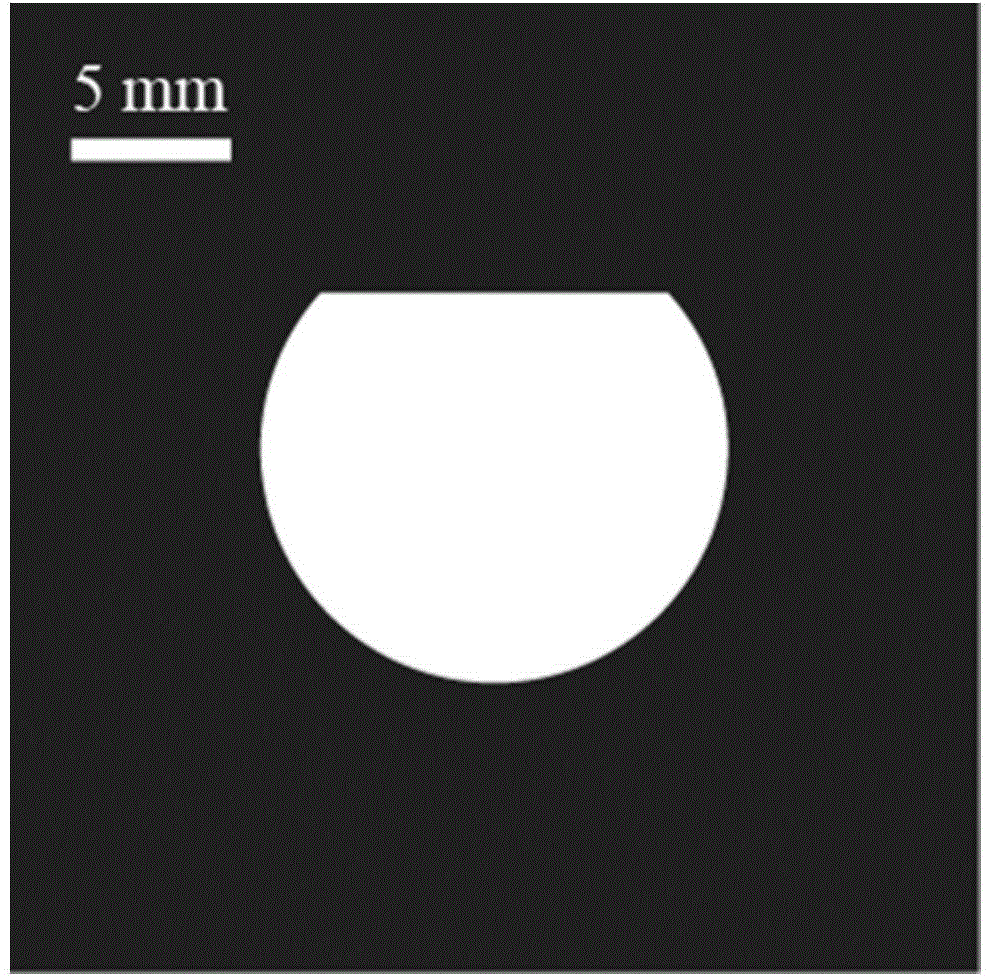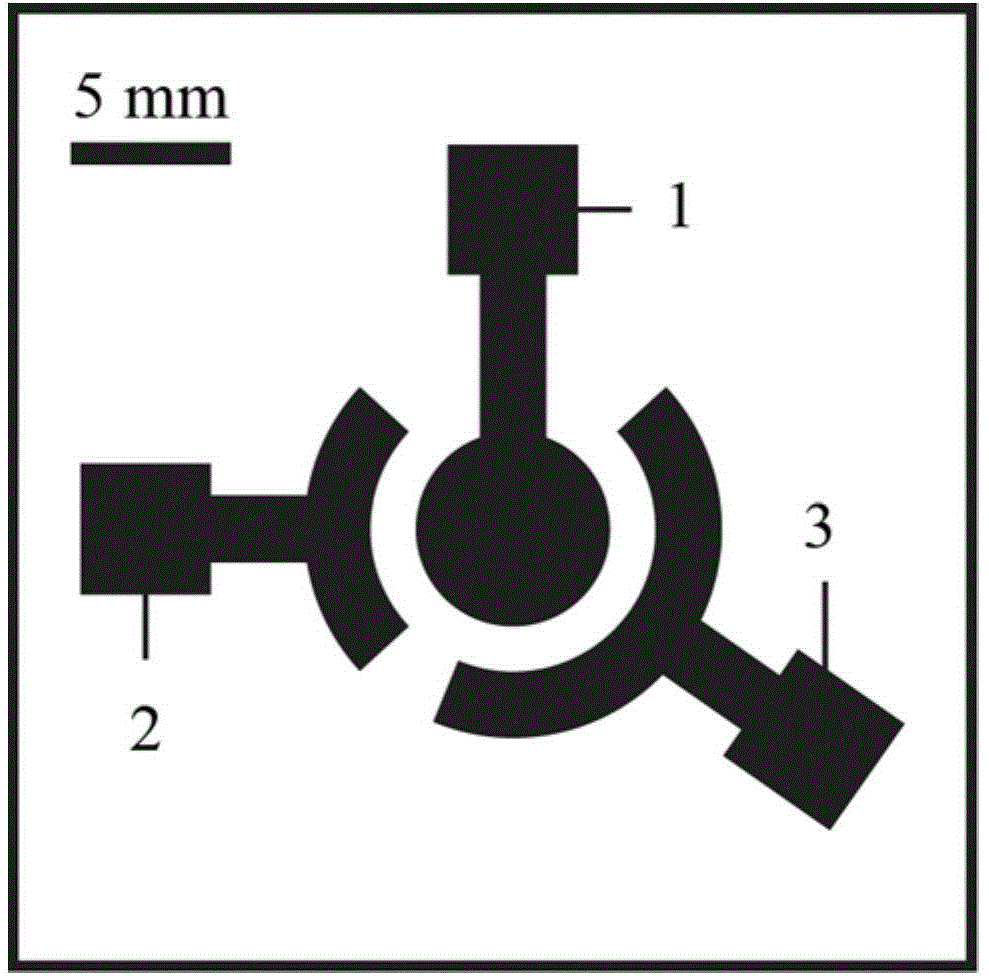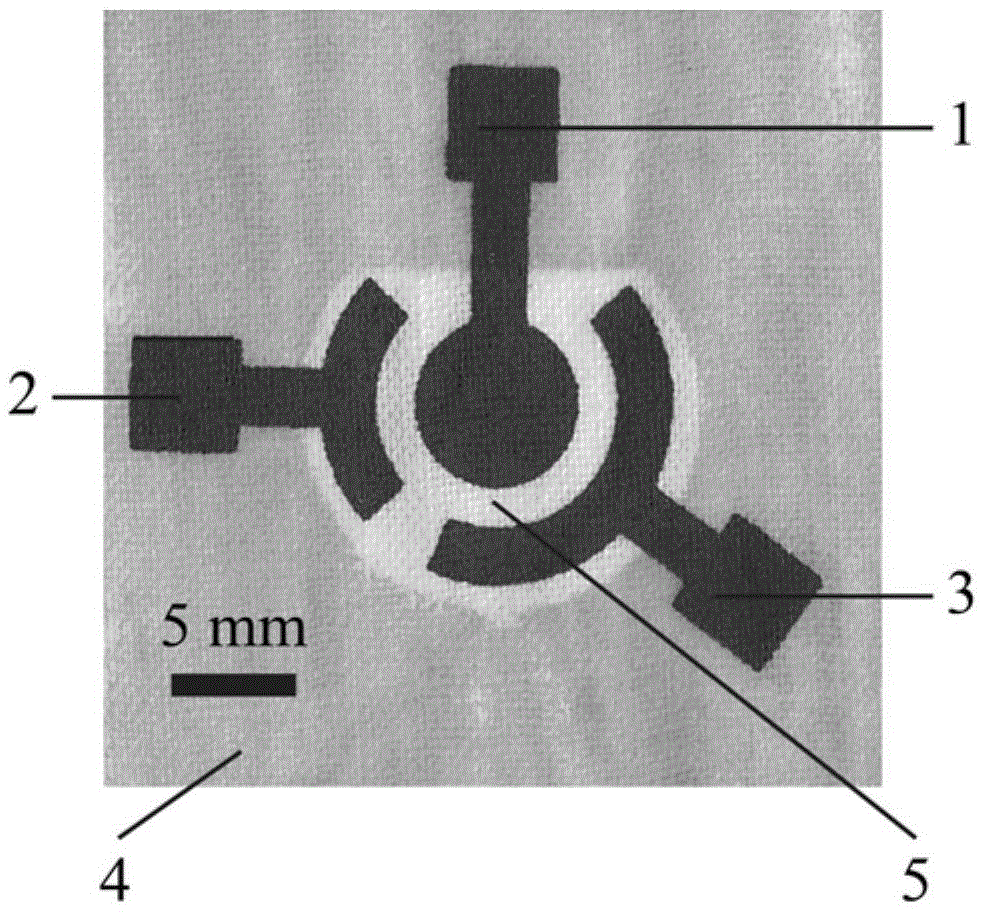Three-carbon electrode electrochemiluminescence base fabric micro-fluidic chip and preparation method and application thereof
A microfluidic chip and electrochemistry technology, applied in the field of microfluidic analysis, can solve the problems that have not been reported, and achieve the effects of small sample consumption, good stability and high detection sensitivity
- Summary
- Abstract
- Description
- Claims
- Application Information
AI Technical Summary
Problems solved by technology
Method used
Image
Examples
Embodiment 1
[0056] A method for preparing a three-carbon electrode electrochemiluminescent cloth-based microfluidic chip, comprising the following steps:
[0057] (1) Use Adobe Illustrator CS5 drawing software to design the shape of the reaction cell (crone shape), the shape of the reaction cell is as follows figure 1 as shown, figure 1 The middle white area is the reaction pool (also called hydrophilic area, hydrophilic pool), and then made into a 300-mesh reaction pool screen; use Adobe Illustrator CS5 drawing software to design electrode patterns, such as figure 2 Shown: the working electrode is circular, the counter electrode and the reference electrode are semi-circular, and then made into a 300-mesh electrode mesh.
[0058] (2) Cut a piece of cloth with a width of 80 mm and a length of 110 mm. The cloth is white plain cotton cloth with about 10.7 mg per square centimeter and 96 threads per inch (about 14.3 mg per meter of thread).
[0059] (3) Place the cloth under the screen of ...
Embodiment 2
[0063] The three-carbon electrode electrochemiluminescence cloth-based microfluidic chip of Example 1 quantitatively detects TPA, and the detection process is as follows:
[0064] (1) First fix the chip on the hydrophobic polyethylene bracket, and put the bracket into the dark box, align the working electrode in the chip reaction pool with the macro lens (model M1614-MP) of the CCD (model MC15), and adjust the CCD Relevant parameters to make the image clearest, the imaging detection device such as Figure 4 shown.
[0065] (2) Add 11 μL of detection working solution into the reaction pool, wait for 3 to 5 seconds, start the CCD automatic imaging function to collect electrochemiluminescence images, and then start the potentiostat (model CHI 1242B) to trigger electrochemiluminescence and record the luminescence imaging data.
[0066] (3) The imaging data were further analyzed and processed by Matlab R2012a (MathWorks company, USA) and Origin 7.0 (Microcal Software Inc., Newark...
Embodiment 3
[0074] The three-carbon electrode electrochemiluminescence cloth-based microfluidic chip of Example 1 quantitatively detects H 2 o 2 , its detection process is the same as in Example 2.
[0075] detect H 2 o 2 The working solution is composed of a concentration of 5mM luminol solution (configured by 0.1M NaOH solution) and different concentrations of H 2 o 2 solution (diluted with 0.1M NaOH solution in 30% H 2 o 2 obtained) by mixing equal volumes.
[0076] First verify the quantitative detection of H 2 o 2 Feasibility, set the H in the working solution 2 o 2 The concentration was 0, 0.5 and 2mM, and the scanning potential and rate of cyclic voltammetry were -0.5~1V and 100mV / s, respectively.
[0077] Figure 8 The solid line is 0mM H 2 o 2 Luminescence curve, dotted line and dashed line are 0.5mM and 2mM H 2 o 2 Glow curve. Comparing the luminous value of the dotted line and the virtual curve, it can be seen that: with the H 2 o 2 Concentration increased fr...
PUM
 Login to View More
Login to View More Abstract
Description
Claims
Application Information
 Login to View More
Login to View More - R&D
- Intellectual Property
- Life Sciences
- Materials
- Tech Scout
- Unparalleled Data Quality
- Higher Quality Content
- 60% Fewer Hallucinations
Browse by: Latest US Patents, China's latest patents, Technical Efficacy Thesaurus, Application Domain, Technology Topic, Popular Technical Reports.
© 2025 PatSnap. All rights reserved.Legal|Privacy policy|Modern Slavery Act Transparency Statement|Sitemap|About US| Contact US: help@patsnap.com



